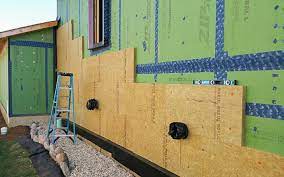As intense climate situations become more recurrent and intense due to global warming, creating resilience has developed into a priority for architects, technical engineers, and builders. Rainscreen techniques are one of the best ways to boost the sustainability and durability of complexes. With this blog post, we will explore what rainscreen solutions are, the way they work, their positive aspects, and types.
Rainscreen products methods are external surfaces cladding techniques that comprise of an exterior layer that shields the construction from rainwater along with an interior level which offers efficiency and energy efficiency. The outside layer is typically made from durable supplies such as metal, dietary fiber concrete, or normal gemstone. The interior layer is usually made up of a breathable membrane layer that permits water vapor to avoid while stopping normal water from getting into the construction envelope.
The principal purpose of rainscreen methods is to guard the construction from dampness damage by letting air flow behind the cladding panels. This venting gap generates a strain differential that draws moisture content out of the wall construction and helps prevent it from gathering inside of. As a result, rainscreen systems decrease the potential risk of mold progress, decaying wood, rust in metal components, and rapid failing of efficiency.
One of the important benefits of rainscreen solutions is their capability to boost electricity effectiveness by reduction of temperature loss through conduction and convection. Air space involving the cladding sections and efficiency provides a buffer area that slows down warmth move in between outdoor and indoor conditions. This impact decreases heating and air conditioning fees throughout the year by decreasing thermal bridging.
Rainscreen solutions can also increase constructing appearance by offering creative designers with an array of alternatives for textures, hues, designs, and forms. Metal cladding can cause sleek present day appearance or traditional surface finishes for example copper or zinc patina. Fiber concrete panels can simulate hardwood grain or stone textures without their servicing needs or inclination towards flame problems.
There are various kinds of rainscreen systems available in the market, including vented, emptied and back-ventilated (DVB), and stress-equalized systems. Vented techniques make use of an atmosphere space to ventilate the cavity and depend on gravitational forces to drain away h2o. DVB solutions incorporate a water flow airplane which allows h2o to avoid through weep slots in the bottom from the wall construction. Pressure-equalized techniques use a combination of air stress equalization compartments and discharge airplanes to prevent blowing wind-motivated rainfall from infiltrating the cladding.
Conclusion:
Rainscreen systems are a necessary part of creating resilience because they provide defense against moisture content injury, enhance power productivity, boost beauty, and provide makers with functional selections for modification. By incorporating rainscreen techniques into their models, designers and builders can make complexes that hold up against extreme weather conditions, decrease ecological impacts, and deliver extended-long lasting functionality. As global warming will continue to have an effect on our constructed surroundings, it is important to purchase sustainable options that encourage resilience and adaptability.



